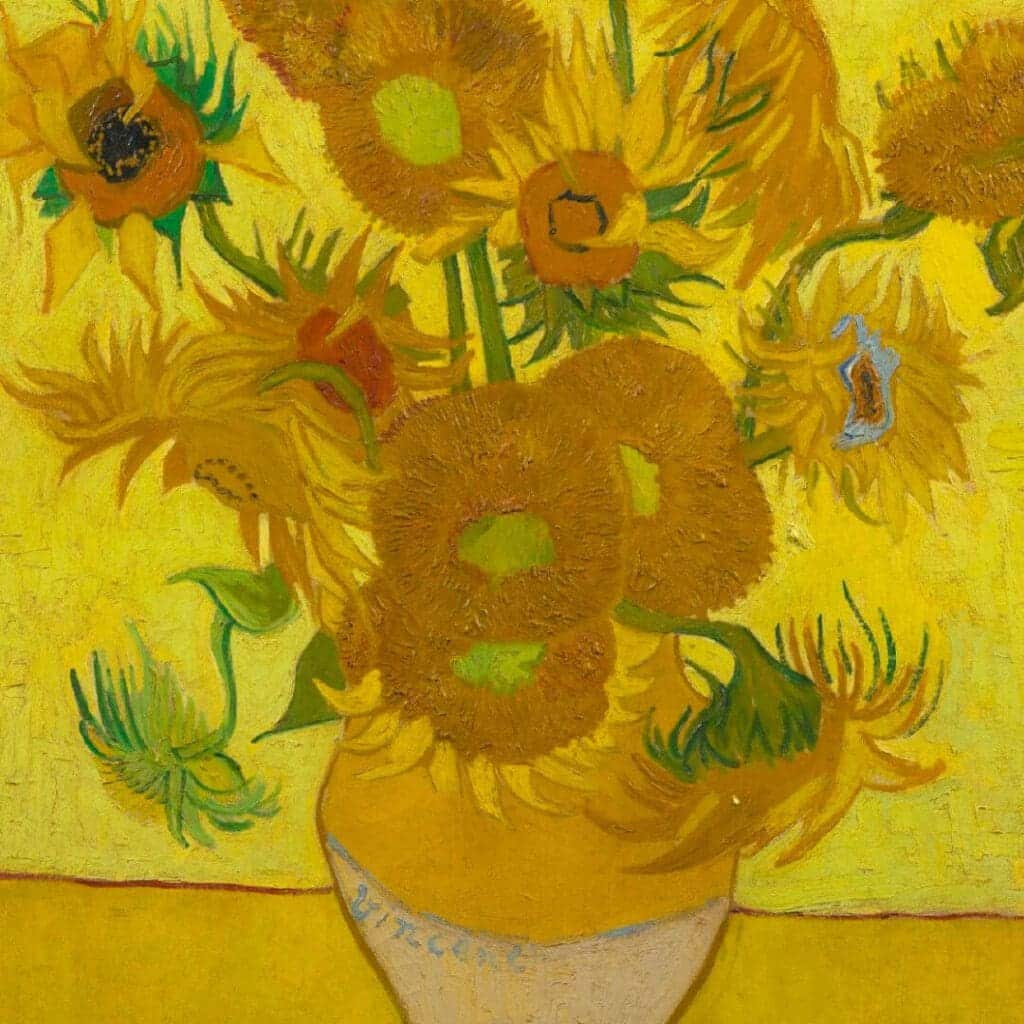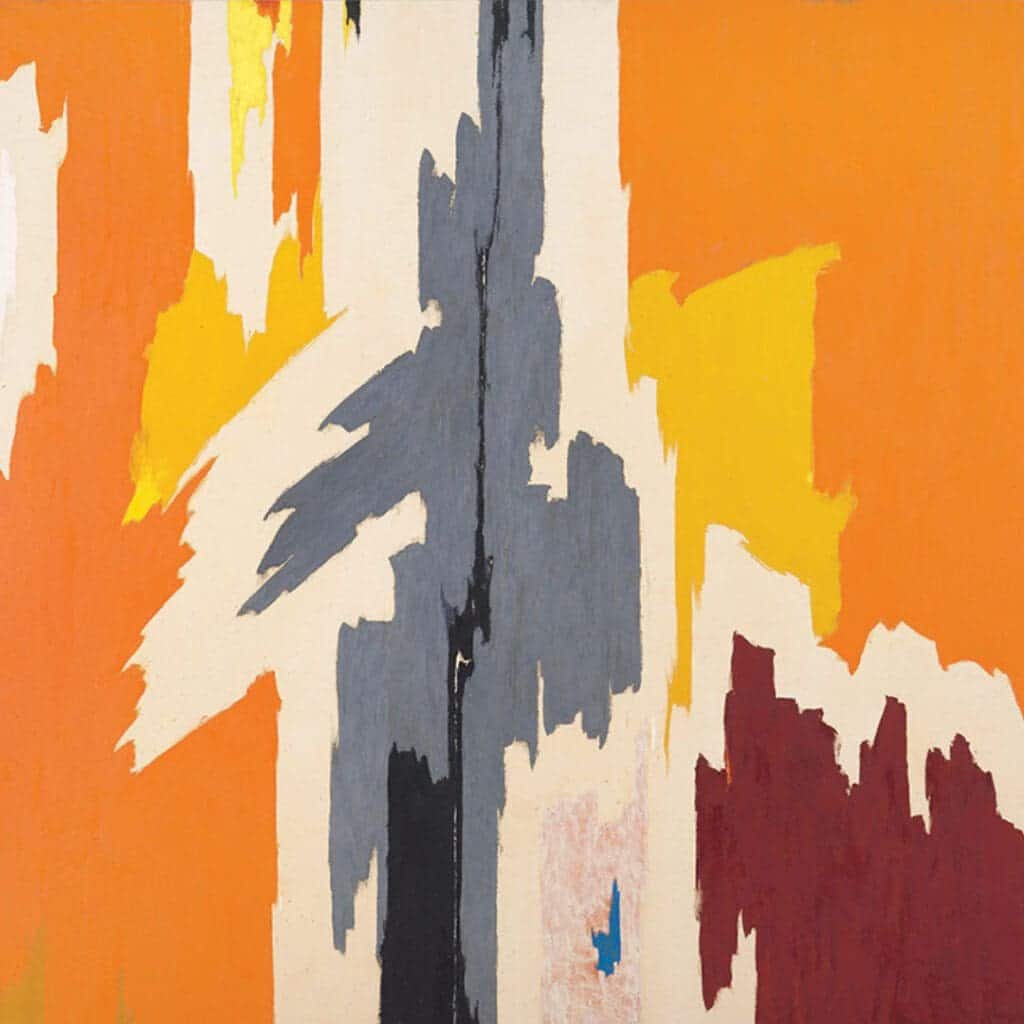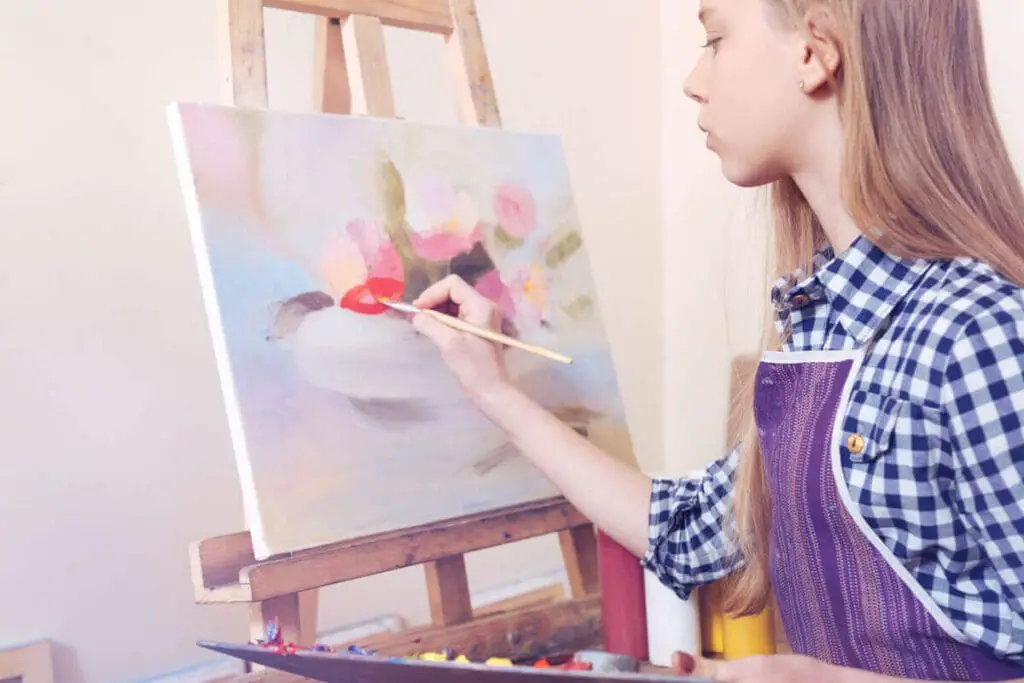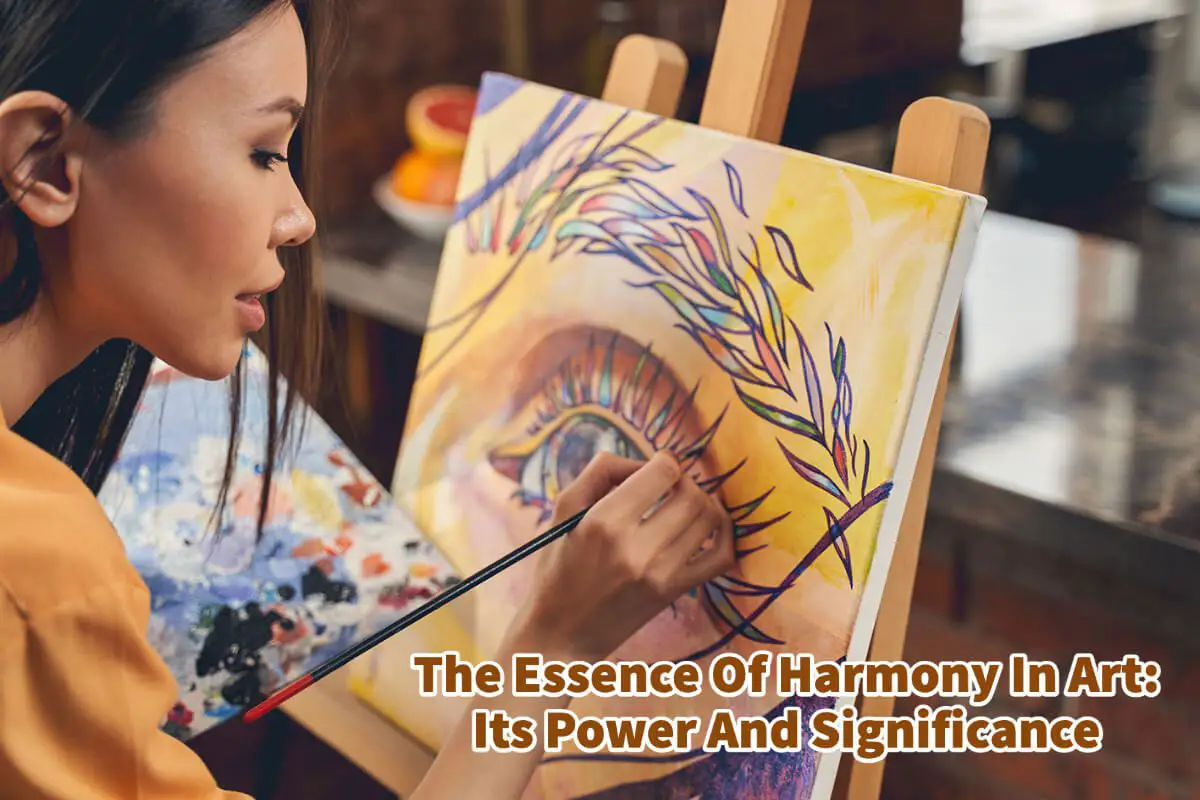In art, harmony is a cornerstone principle that fosters coherence, balance, and visual pleasure. As an artist or art lover, understanding harmony is essential to art.
The concept of harmony in art goes beyond the mere arrangement of colors, shapes, and lines. It encapsulates a unified whole that evokes a sense of completeness and beauty. Read on as we explore the profound meaning of harmony in art, explore its various aspects, and shed light on why understanding and employing harmony is crucial for every artist.
Table of Contents
- Defining Harmony In Art
- Aspects Of Harmony In Art Explored
- The Importance Of Harmony In Art Explored
- Frequently Asked Questions
- Related Questions
Defining Harmony In Art
Harmony in the art can be described as the skillful integration and coordination of diverse elements within a composition to achieve a visually pleasing and balanced result. It encompasses the effective use of color, value, texture, shape, line, and other artistic elements to create a sense of unity and coherence.
Harmony ensures that all the components of an artwork work in concert, guiding the viewer’s eye and creating a harmonious whole that elicits a sense of satisfaction and aesthetic pleasure.
Aspects Of Harmony In Art Explored

Many elements in the harmony of art are essential. Below are ten of the most critical aspects of harmony in art.
Color & Harmony In Art
Color harmony is carefully selecting and arranging colors to create a visually balanced and pleasing composition. It involves understanding the principles of color theory, such as complementary, analogous, or monochromatic color schemes, and using them to achieve a harmonious visual effect.

Vincent Van Gogh was an expert in understanding the harmony of color. Some of his sunflower paintings are great examples of harmony with colors.
Value Harmony In Art
Value harmony involves the skillful manipulation of light and dark tones within an artwork. It ensures a balanced distribution of values to create depth, contrast, and a sense of unity.
Proper value harmony allows for the effective rendering of form and enhances the overall visual impact of the artwork.
Shape And Form Harmony In Art
Harmony in shapes and forms entails consistently using geometric or organic shapes throughout an artwork. It involves maintaining a visual consistency in the shapes employed, whether they are angular, curvilinear, or a combination of both.
A harmonious arrangement of shapes and forms creates a cohesive visual language within the composition.
Line Harmony In Art
Line harmony focuses on the deliberate use and arrangement of lines to create unity and rhythm in an artwork. It involves considering the types of lines used (e.g., straight, curved, or jagged) and their relationship to one another.
Line harmony guides the viewer’s eye and establishes a sense of flow and continuity.
Texture Harmony In Art
Texture harmony involves the deliberate incorporation of different surface qualities within an artwork. It includes considering smoothness, roughness, or the illusion of texture.
Achieving texture harmony ensures that the various textures complement each other and contribute to overall visual cohesion.

One of the painters we love that has some great texture or feeling of texture is some large-scale paintings by Clyfford Stills. We love and appreciate his artwork.
Scale And Proportion Harmony In Art
Scale and proportion harmony relate to the relationship between different elements within an artwork. It involves determining the appropriate size and scale of objects about one another to create a sense of balance and visual unity.
Proper scale and proportion harmonization enable the viewer to perceive a coherent and well-composed composition.

Spatial Harmony In Art
Spatial harmony pertains to the effective use of space within an artwork. It involves arranging objects, figures, or elements to create a harmonious balance between positive and negative spaces.
Spatial harmony contributes to the overall visual balance and aids in guiding the viewer’s eye through the composition.
Conceptual Harmony In Art
Conceptual harmony goes beyond the visual elements and delves into the theme or message of the artwork. It involves aligning the subject matter, symbolism, and narrative to create a cohesive and meaningful artistic statement.
Conceptual harmony ensures that the visual elements support and reinforce the intended concept or idea.
Emotional Harmony In Art
Emotional harmony focuses on creating an atmosphere or mood that is consistent and resonant throughout the artwork. It involves the skillful use of colors and compositions and evokes specific emotions or feelings.
Emotional harmony allows the artist to effectively communicate and connect with the viewer on an emotional level, enhancing the impact and resonance of the artwork.
Contextual Harmony In Art
Contextual harmony considers the broader cultural, historical, or societal context in which the artwork exists. It involves considering the relevance and appropriateness of the artistic choices made within a specific time, place, or cultural background.
Contextual harmony ensures that the artwork maintains a sense of relevance and coherence within its more extensive framework.
The Importance Of Harmony In Art Explored

Understanding and employing harmony in art is paramount. Here are some of our top reason for the importance of Harmony in art:
Visual Appeal
Harmony creates visually pleasing and balanced compositions that capture the viewer’s attention and engage their senses. It contributes to the overall aesthetic appeal of the artwork, making it more captivating and memorable.
Coherence And Unity
Harmony combines diverse elements within an artwork, establishing a sense of coherence and unity. It ensures the various components work harmoniously, creating a visually balanced and integrated whole.
Communication
Harmony in art facilitates effective communication of the artist’s intent, ideas, and emotions. A harmonious composition enhances the clarity and impact of the artistic message, allowing the viewer to connect with and understand the artwork more deeply.
Visual Flow
Harmony guides the viewer’s eye through the artwork, creating a smooth visual flow and directing attention to critical elements or focal points. It aids in controlling the viewer’s gaze and leading them through the composition deliberately and engagingly.
Emotional Impact
A harmonious composition can evoke robust emotional responses from the viewer. By employing elements of harmony effectively, artists can elicit specific emotions, establish a particular mood, or convey a desired atmosphere within the artwork.
Professionalism And Skill
Mastery of harmony in art demonstrates an artist’s skill, expertise, and understanding of design principles. It showcases the artist’s ability to create visually cohesive and aesthetically pleasing compositions, elevating their work to a higher level of professionalism.
Engaging The Viewer
Harmonious compositions can captivate and engage viewers on a deeper level. When viewers perceive a sense of harmony in an artwork, they are more likely to explore and interpret it, fostering a stronger connection between the viewer and the artwork.
Memorability
Artworks that exhibit harmony are often more memorable and leave a lasting impression on viewers. A well-structured and harmonious composition stands out in the viewer’s mind, ensuring the artwork resonates long after the initial encounter.
Harmony in art is an essential principle that artists must understand and employ to create impactful and visually compelling compositions. Artists can achieve unity, balance, and aesthetic pleasure by skillfully integrating various elements, such as color, shape, line, and texture.
Harmony enhances communication, engages the viewer, and creates a cohesive whole that evokes emotions and leaves a lasting impression. By embracing harmony in their artistic practice, artists can elevate their work to new heights and connect with their audience on a profound and meaningful level.
Anita Louise Art is dedicated to art education, great artists, and inspiring others to find and create their art. We love art that uplifts and inspires. #ArtToMakeYouSmile! #ArtToMakeYouHappy!
If you are interested to see any of my art, you can find out more by clicking here. If you are interested in what inspires me and my paintings, you can discover more by clicking here.
We have a free newsletter and would love you to be part of our community; you can subscribe to the newsletter by clicking here. If you have any questions, I would be happy to talk to you. You can reach me, Anita, by clicking here.
Subscribe to our Anita Louise Art YouTube Channel with great videos and information by clicking here.
Join us for our podcast “5 Minutes With Art.” Spend just 5 minutes a week with us to discover and learn about great art and artists. You can find out more about our podcast by clicking here.
Frequently Asked Questions
What is the significance of harmony in art?
Harmony in art is crucial as it brings a sense of unity and completeness to a composition. It ensures that the various elements work together cohesively, creating a visually pleasing and balanced experience for the viewer.
How does harmony extend beyond color choices?
While color harmony is prominent, the concept extends to all visual elements, including shapes, lines, and textures. It involves the thoughtful arrangement of these elements to create a unified and harmonious whole.
Can disharmony be intentional in art?
Yes, intentional disharmony, or dissonance, can be used to evoke specific emotions or make a bold artistic statement. Artists may strategically disrupt harmony to create tension or highlight certain aspects of their work.
How does harmony contribute to the emotional impact of art?
Harmony plays a significant role in eliciting emotional responses from the audience. A well-balanced composition can evoke feelings of tranquility, while intentional disharmony might provoke tension or excitement.
Is harmony limited to traditional art forms, or does it apply to contemporary and digital art as well?
Harmony is a universal principle applicable to all art forms, whether traditional or digital. Artists across various mediums use it to enhance the visual experience and communicate their intended messages effectively.
How can artists achieve harmony in their compositions?
Achieving harmony requires a thoughtful consideration of elements such as balance, proportion, and rhythm. Artists can experiment with different combinations until they find a visual arrangement that resonates with a sense of unity and coherence.
Does cultural diversity impact the perception of harmony in art?
Cultural influences can indeed shape the perception of harmony in art. What may be considered harmonious in one culture could be perceived differently in another. Artists often draw inspiration from their cultural backgrounds, creating diverse interpretations of harmony.
Can disharmony evolve into a new form of artistic expression?
Absolutely. Some artists intentionally challenge traditional notions of harmony to push the boundaries of artistic expression. This can lead to innovative and thought-provoking works that redefine the conventional understanding of visual balance.
How does harmony contribute to the longevity of artistic impact?
Artworks that embody harmony tend to have a timeless quality. The careful consideration of composition ensures that the work remains visually engaging and resonant with audiences across different eras, contributing to its lasting impact.
How can art enthusiasts develop a deeper appreciation for harmony in art?
To appreciate harmony in art, one can study the works of master artists, attend art exhibitions, and engage in discussions with other art enthusiasts. Developing an understanding of the principles of harmony enhances the ability to recognize and appreciate its power in visual compositions.
Related Questions
What Is The Difference Between Shape And Form In Art?
The word shape mainly refers to flat, simple 2-D drawings; the shape 2-D drawing would have a length and width. A form is more complex and is 3-D, such as a sphere, cube, or cone. The word form has a dual meaning in art, referring to various elements that make up art. The form is essential for Formalism, abstract art, and biomorphic art.
By clicking here, you can learn more by reading What Is The Difference Between Shape And Form In Art?.
What Is The Difference Between Fine Arts and Visual Arts?
Fine art is a broad term used to describe many different types of art; one of the arts under the umbrella of fine art is visual arts. Fine arts can include music, theatre, dance, literature, and other types of art. In contrast, Visual art is about only arts of a visual nature, such as painting, sculpture, or filmmaking.
By clicking this link, you can discover more by reading What Is The Difference Between Fine Arts and Visual Arts?.
Where Did Art Come From?
Many historians believe art started first in Africa; many ancient art forms have been found worldwide. Cavemen art is some of the earliest forms of art. Many cultures put art on their bodies through tattooing and other art forms.
By clicking here, you can discover more by reading Where Did Art Come From?


